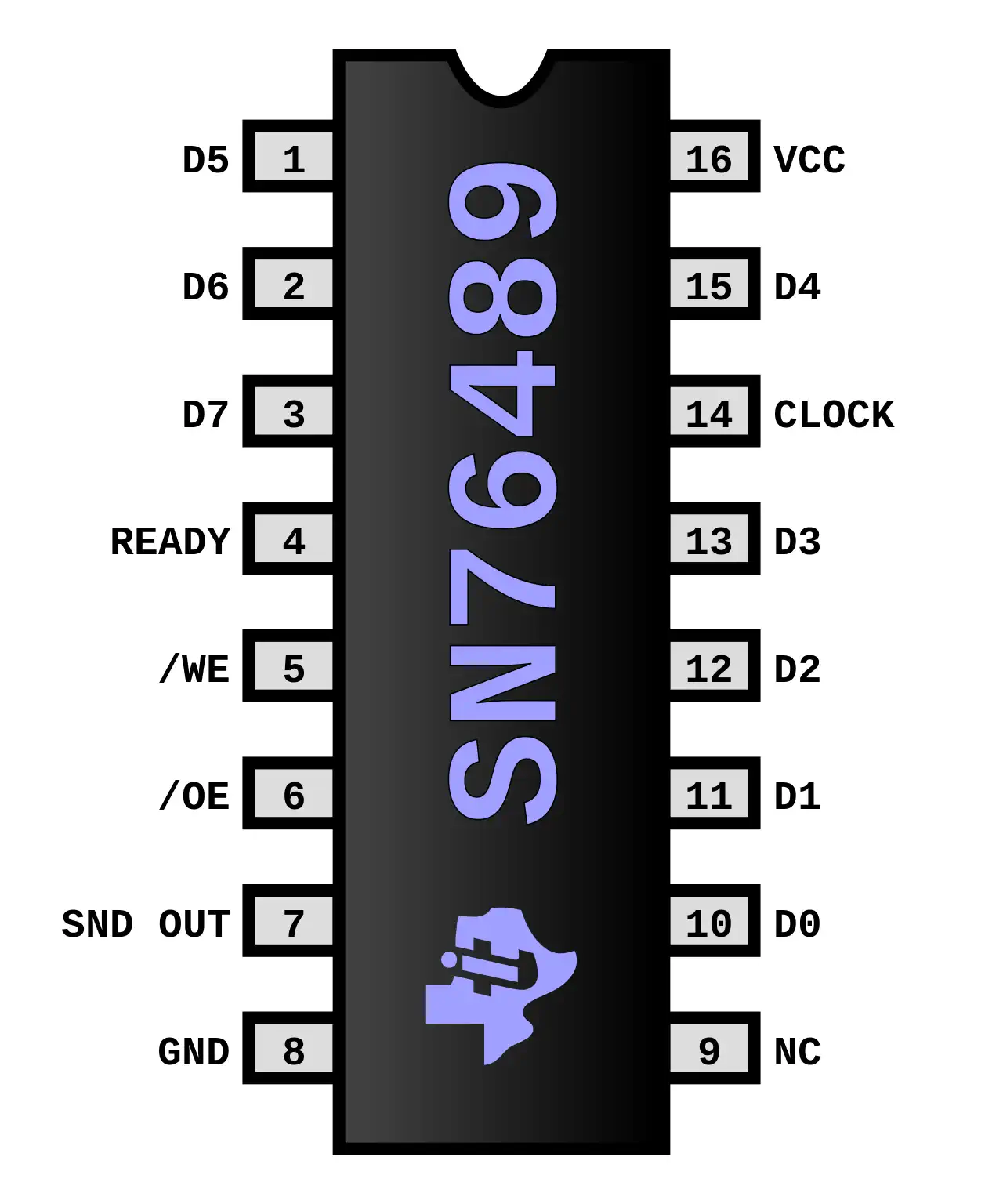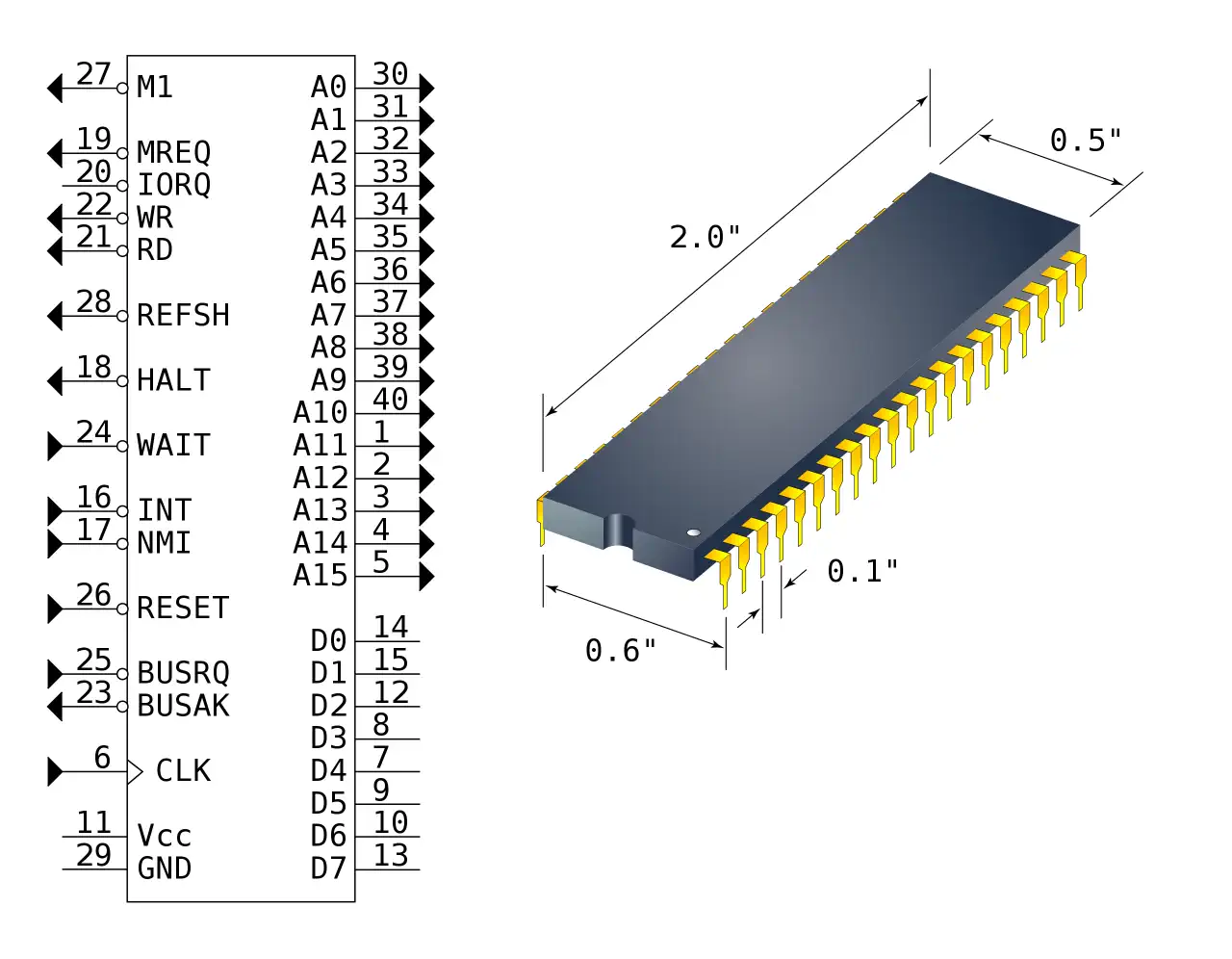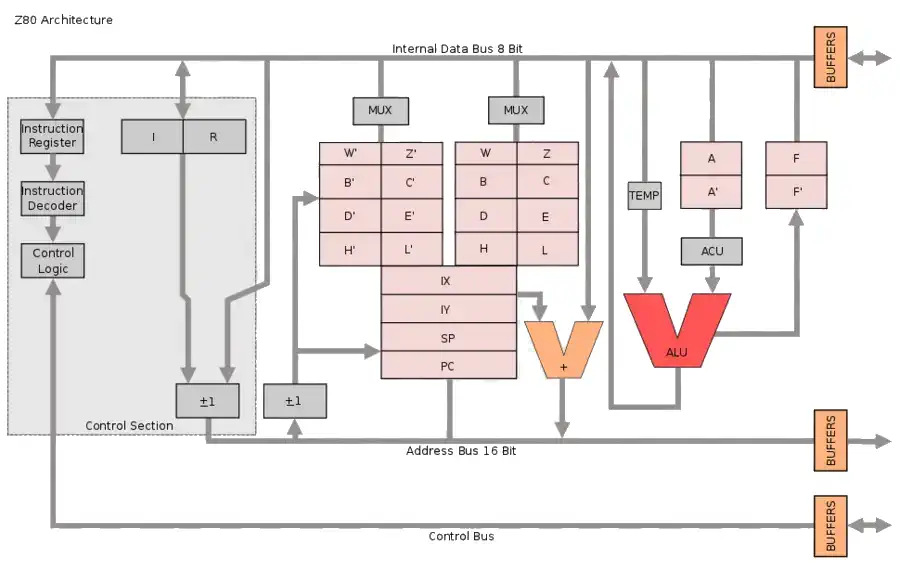Sega Master System III Compact
The Sega Master System had continued success in Brazil, while it was in decline in Europe and North America. The Tectoy company from Brazil produced portable Sega Master systems, of which the Master System III Compact is the first one.
The system is a handheld version of the Master System, and the cartridge is inserted into a cartridge slot on the backside of the system. The unit can be powered by an adapter or by batteries, and there is a thumbpad controller right on the device itself. Additionally there is also a controller port so the user could plug in a regular Sega controller.
Texas Instruments SN76489 Sound Generator
The SN76489 Digital Complex Sound Generator (DCSG) is a TTL compatible programmable sound generator chip created by Texas Instruments. It main application was the generation of music and sound effects in home computers, arcade machines and home game consoles. Functionally the chip was similar to the General Instrument AY-3-8910.
Sound Capabilities:
- 3 Square Wave tone generators, 16 volume levels
- 1 White Noise Generator (white and periodic noice, 3 frequencies, 16 volumes)
The SN76489 Was originally designed to be used in the TI-99/4 computer, where it was first called the TMS9919 and later SN94624, and had a 500 kHz max clock input rate. Later, when it was sold outside of TI, it was renamed the SN76489, and a divide-by-8 was added to its clock input, increasing the max clock input rate to 4 MHz, to facilitate sharing a crystal for both NTSC colorburst and clocking the sound chip. A version of the chip without the divide-by-8 input was also sold outside of TI a

CPU View - Zilog Z80 Family
The Z80 quickly became popular in the personal computer market, with many early personal computers, such as the TRS-80 and Sinclair ZX80, using the Z80 as their central processing unit (CPU). It was also widely used in home computers, such as the MSX range, SORD, and the Amstrad CPC, as well as in many arcade games. Additionally, it was also used in other applications such as industrial control systems, and embedded systems. The Z80 was widely used until the mid-1980s, when it was gradually replaced by newer microprocessors such as the Intel 80286 and the Motorola 68000.
The Z80 microprocessor was developed by Zilog, a company founded by Federico Faggin in 1974. The Z80 was released in July 1976, as a successor to the Intel 8080. It was designed to be fully compatible with the 8080, but also included new features such as an improved instruction set, more powerful interrupts, and a more sophisticated memory management system.
The Z80 quickly became popular in the personal computer


VRAM: 16 Sound Chip SN76489 PSG Sound PSG: 3 Square waves, 1 noise generator
OPL2 FM Synthesizer Display Chip Yamaha YM2602B VDP Display 256x192 in 32 Colors Best Color 32 Colors out of 64 Graphics 256x192 Sprites 32 sprites simultanuously in 16 colors. Storage ROM Cartridges Original Price ¥15,000

